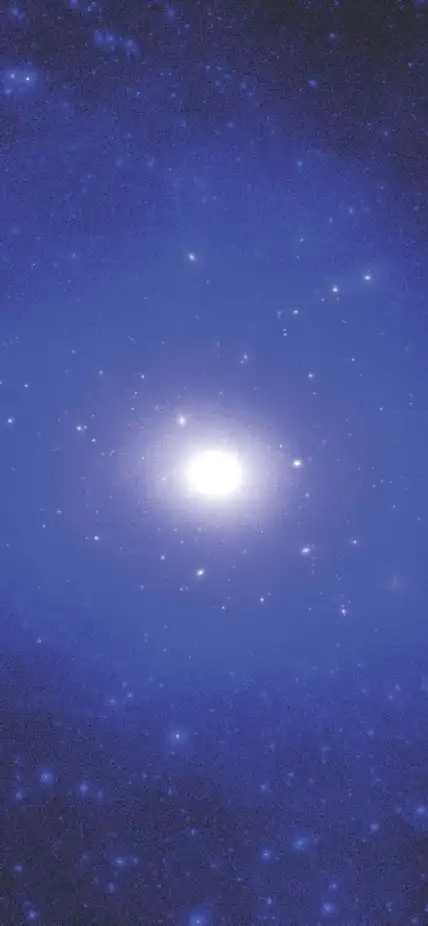
Pasadena, CA—Carnegie Science’s Drew Newman and Gwen Rudie are key contributors to a new interdisciplinary initiative that aims to unravel some of the most mysterious components of the cosmos.
Only about 5 percent of the universe consists of particles and forces that are well understood by modern physics. The rest remains a puzzle, including dark matter—an invisible substance that shapes galaxies and cosmic structures—as well as ubiquitous but puzzling particles called neutrinos, which were produced moments after the Big Bang.
With a $4 million grant from the John Templeton Foundation, an interdisciplinary team of scholars from the Carnegie Science Observatories, the University of Southern California, and the University of California Riverside will establish a research hub to better understand these cosmic mysteries.
Called the Lyman-Alpha forest Research Collaboration, or LARC, the research group will develop cutting-edge computer models to simulate the birth of structure in the universe, testing different theories about how galaxies form. Comparing these computer-grown models of the universe to actual observations of the cosmos will help reveal quantum properties of its hidden constituents, including dark matter and neutrino particles.
“At its core, LARC is designed to pursue the deepest questions about our universe and the essence of human knowledge: What is the fundamental nature of matter? What forces shape physical reality? What is the meaning of ‘discovery’ when AI and simulation guide the pursuit of truth?” said USC’s Vera Gluscevic, who will lead the project along with UC Riverside’s Simeon Bird.
Added Bird: “The most exciting part is the team, experts in a vast range of disciplines, including theoretical and observational astrophysics, philosophy, computer science, and even interactive data visualization.”
As part of this groundbreaking new effort, Carnegie’s Newman and Rudie will use cutting-edge observations of hydrogen gas in space to trace dark matter.
“Thanks to new observations with large telescopes, we can now map the three-dimensional structure of intergalactic gas. With the LARC team, we’ll create new ways to use these exciting maps to learn about the hidden universe,” Newman explained.
The team also includes computer scientists Aiichiro Nakano of USC and Christian Shelton of UC Riverside. Both use artificial intelligence techniques to recognize useful patterns in computer simulations and speed them up. This will enable astrophysicists to compare simulations to real data collected by telescopes and space missions.
In doing so, they raise an important philosophical question, one which the group also plans to tackle: In modern astronomy, what does it mean to “understand” the universe when our knowledge comes from computer-generated models.
Historically, gathering scientific knowledge meant formulating theories simple enough to be grasped and explained by humans. Now, the sheer volume and complexity of astronomical data challenge this traditional approach, as many insights come from computer-generated models beyond direct human intuition.?
To dig into this conundrum, a team of philosophers, led by USC’s Dmitri Gallow, will examine how new scientific methods such as these may change our understanding of how we produce scientific conclusions and generate knowledge.
“Using AI to understand a system as complex as the universe poses significant rewards—but also significant risks,” Gallow indicated. “We need to think carefully about how to responsibly learn from AI.”
The public will also get a chance to participate in this cosmic exploration. Martzi Campos and Sean Bouchard of USC’s film school will produce an interactive visual, which will be displayed in the 3D Visualization Lab on the Carnegie Observatories campus. They will also create educational games for the public using the hub’s work as inspiration.
The wide scope of this project is in keeping with the ambitions of John Templeton himself, a maverick investor who launched the foundation with the aim of funding advances in scientific discovery and inspiring awe and wonder for the universe.
“Ultimately, it’s the collaborative nature of LARC, combining data from state-of-the-art telescopes with modern theoretical approaches - and bringing the expertise of so many disciplines - that will lead to novel understanding of the cosmos,” concluded Rudie.
